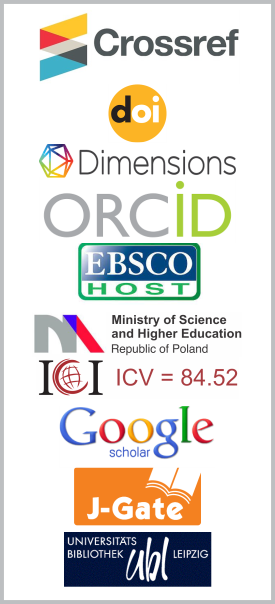Automated Heuristic Evaluator
DOI:
https://doi.org/10.26713/jims.v8i4.558Abstract
Website testing becomes more challenging nowadays as numbers of websites are growing rapidly. Currently, most websites testing are still being conducted manually. Also, website testing consumes substantial amount of time that leads to client frustration and loosen up the bond between two parties. Therefore, an automated website testing is vital for Information Technology projects in order to carry out large number of tests in shorter period of time. This paper presents a web based validation system for website testing called as an Automated Heuristic Evaluator (AHE). AHE entails the features of checking invalid hyperlinks, visual clarity checking, readability scores and mobile friendly test of webpages. AHE is developed using PHP, JScript and HTML language integrating four selected principles of 12 Heuristic Principles. A user acceptance study has also been conducted with 7 software testers. The results found promising result from AHE for an effective software testing in future.
Downloads
References
Sivaji, A. (2011). Usability Testing Methodology Effectiveness of Heuristic Evaluation. Asia Modelling Symposium. Kuala Lumpur.
Hert, & Marchionini. (2003). Seeking Statistical Information in Federal Websites: Users, Tasks, Strategies, and Design Recommendations. A Final Report to the Bureau of Labor Statistics.
Ramly, M. (2010). Web Site Usability: A Designer's Guide, User Interface Engineering. UX Experience. Kuala Lumpur.
Korf, R. E. (2010). Real-time heuristic search. Artificial intelligence, 189-211.
Kee Yong Lim,"Usability in Singapore",Human-Computer Interaction Series, 2011, Global Usability, Part 2, Pages 285-307
Monique W.M. Jaspers, "A comparison of usability methods for testing interactive health technologies: Methodological aspects and empirical evidence”, International Journal of Medical Informatics,Volume 78, May 2009, Pages 340-353.
Jakob Nielsen, "Finding usability problems through heuristic evaluation", in proceedings of the SIGCHI conference on Human factors in computing systems, pages: 373 380,1992
Nielsen, J. (1994). Introduction to Usability. conference on Human factors in computing systems.
Alrobai, A. A., & AlRoobaea, R. S. (2010). Investigating the usability of e-catalogues systems: modified heuristics vs. user testing. Technology Research, 22 - 45.
Sivaji, A., Downe, A. G., Mazlan, M. F., Tzuan, S. S., & Abdullah, A. b. (2011). Importance of Incorporating Fundamental Usability with Social & Trust Elements for ECommerce Website. nternational Conference on Business, Enginering and Industrial Electronics, ICBEIA.
Meyer, H., & Weske, M. (2006). Automated service composition using heuristic search. 81 - 96.
Balbanovic, Marko, & Shoham, Y. (2010). Learning information retrieval agents: Experiments with automated web browsing. On-line Working Notes of the AAAI Spring Symposium Series on Information Gathering (pp. 13 - 18). Heterogeneous Environments.
Downloads
Published
How to Cite
Issue
Section
License
Authors who publish with this journal agree to the following terms:- Authors retain copyright and grant the journal right of first publication with the work simultaneously licensed under a CCAL that allows others to share the work with an acknowledgement of the work's authorship and initial publication in this journal.
- Authors are able to enter into separate, additional contractual arrangements for the non-exclusive distribution of the journal's published version of the work (e.g., post it to an institutional repository or publish it in a book), with an acknowledgement of its initial publication in this journal.
- Authors are permitted and encouraged to post their work online (e.g., in institutional repositories or on their website) prior to and during the submission process, as it can lead to productive exchanges, as well as earlier and greater citation of published work.




